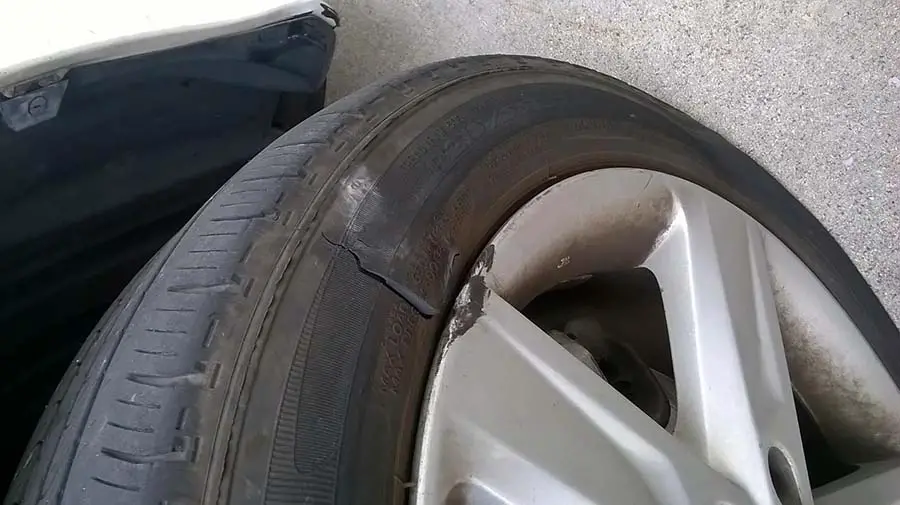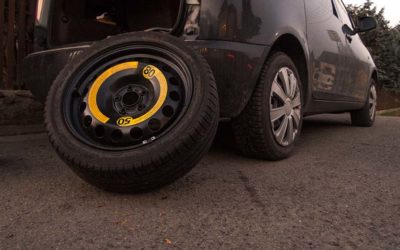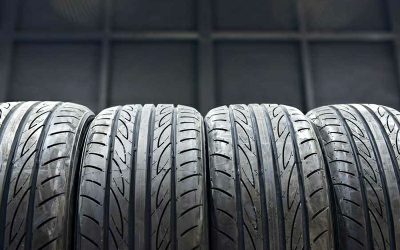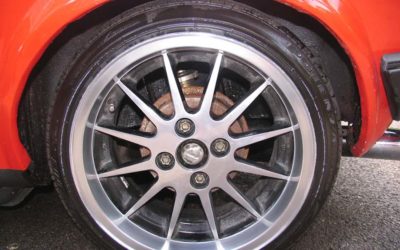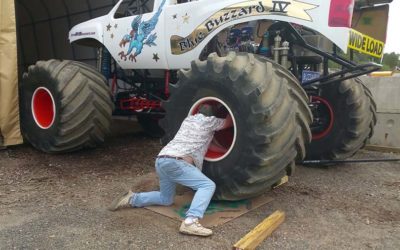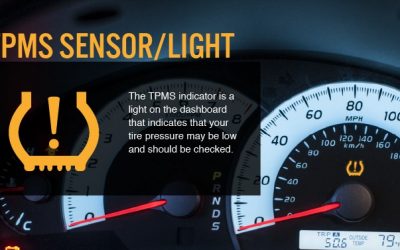It is not once in a blue moon to hit the steering wheel straight into the curb. In most fortunate cases, this failure causes no external damage to your vehicle. However, the internal elements may suffer from a concussion without your attention.
Tire Damage From Hitting Curb
Tire damage usually appears when your vehicle hits the curb. As this component acts as a direct factor, scratches or lacerations in the tires or cracks in the sidewalls are visible signs.
Though these imperfections seem insignificant, turning a blind eye to them is a bad decision. Small damage may be linked to worse-case scenarios in the near future, such as uneven tire wear or breakout sidewalls.
Besides, it is easy to feel the collapse which indicates a flat tire. However, the real cause comes from a damaged pump valve. The valve body is designed to inflate and convex the inside of the tire. As a novice, you may struggle to reach it and notice the problem.
Fortunately, the gas escaping outside provides a clear warning for this situation. Of course, it may not happen right away at the time of impact but the next morning. Whenever you receive a signal, check it out immediately.
Another common damage that also leads to an air leak is bent wheel rims. Even though it is made of strong alloys such as iron, magnesium, or carbon fiber, hard impacts bend it from the inside edges. On the bright side, this case suffers less challenge as you can manage it at home.
Other Damages Worth Your Attention
Wheel Alignment
A bump with the curb causes your wheels to swerve, little by little. It is quite difficult to notice this change if you drive at a low speed. Usually, your vehicle pulls to the side and comes with those signs of damage mentioned above.
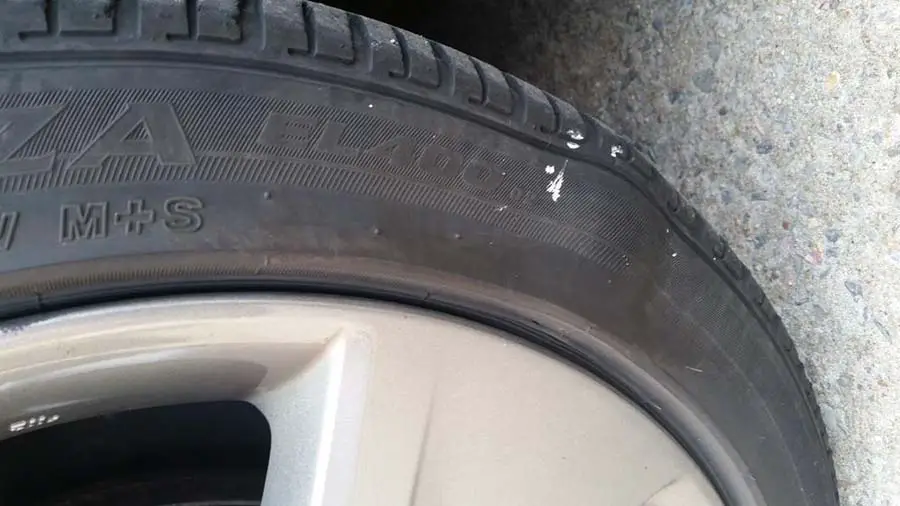
However, things become more serious over time. It even pulls the steering wheel and results in flustered control for the driver. If this problem occurs with the front ones, your vehicle experiences greater friction. It equals more fuel consumption and faster tire wear.
Worst of all, an out-of-whack wheel fails to guarantee the safety of the passengers. Your vehicle no longer achieves optimal performance.
For timely damage diagnosis, a wheel alignment is necessary after hitting the curb, or at least twice per year. A professional maintenance service may detect some extra destructions and repair them with ease. You might get a replacement to fix this problem every once in a while.
Steering And Suspension System
The tie rods deserve the first attention after a collision when it comes to these two complex vehicle systems. This part ensures the car’s stability by attaching susceptible components when braking sharply or moving on uneven roads.
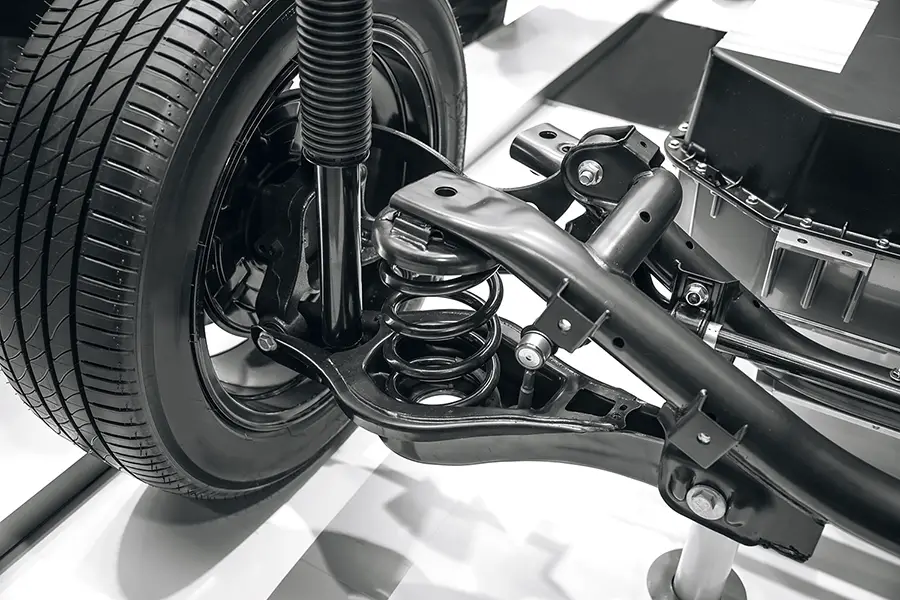
If it goes through damage, immediate repair is a must to maintain safety and security. Putting things off has many negative consequences. For example, it reduces the corresponding spring’s elasticity and leads to the loss of control. Plus, the tires wear out faster than usual.
A piece of expert advice is to monitor the balance bar regularly. Chances are it was not in serious trouble right at the time of the accident. However, the suspension repair becomes essential when moving to bumpy or hilly places.
Besides, the control arms face potential damage once a collision occurs at high speeds. Another marginal cause is the impact of sharp objects such as rocks, large debris, etc.
This results in a misaligned suspension, which in turn decreases driving performance. Your vehicle makes noise when turning or moving over speed bumps. Hence, keep your eyes on this situation as it clearly indicates urgent care.
Transmission
Occasionally, hitting the curb can damage your powertrain, especially with FWD.
Meanwhile, scraping the bottom of the car breaks the connection of the cables in the transmission housing. It even spoils the cooling line or pan oil. The worst-case scenario is that the valve becomes useless.
If shifting gears with your vehicle encounters more challenges than it used to be, it is time to see a professional mechanic.
FAQs
What Happens When You Hit A Curb Slowly?
In fact, speed has less impact than you might think. Of course, driving at 50 mph causes more serious damage than 5-10 mph. However, the angle plays the most important role in this situation.
Hitting the curb at an extravagant angle does not generate much force to result in major damage. On the contrary, straight direction or sharp curves inevitably leads to a bad scenario.
Besides, curb height and car construction are other influencing factors. For example, trucks or SUVs appear to be safer in a crash.
Does Insurance Cover Hit A Curb?
The answer depends entirely on the insurance type you have for your vehicle. If it is comprehensive insurance, there is no doubt of the full coverage for all the problems with your car.
Otherwise, you must pay for the repair yourself regarding liability insurance. It is only responsible for the damage you cause to others.
Without a doubt, it is best to check your contract on this matter.
Conclusion
As noted above, hit curb tire damage occurs if you cannot control the angle of impact. Scratches, dents on the wheel rim, or underinflated tires are the most common accidents.
Also, your vehicle may experience more serious problems with the suspension and steering, affecting the tires. Therefore, it is best to have a thorough inspection at a reputable auto repair shop for a definite guarantee.

